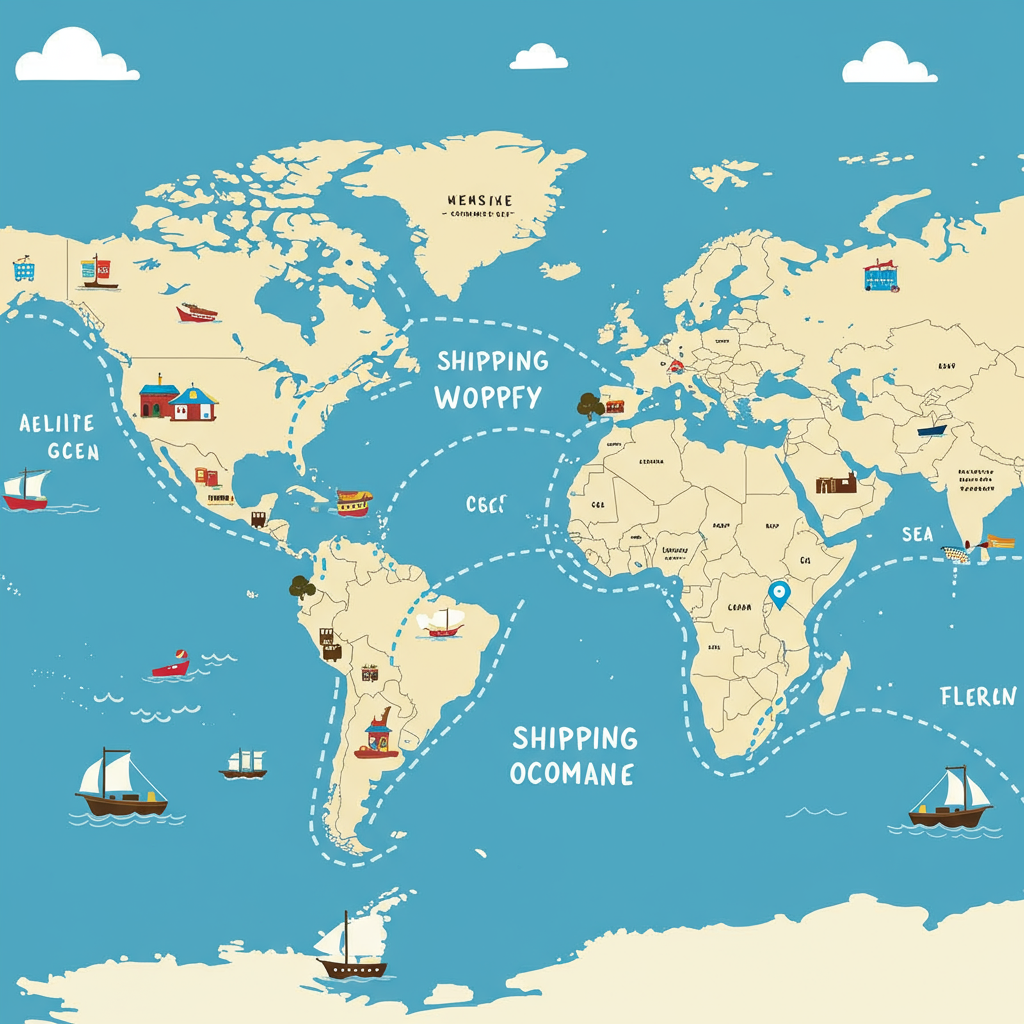A comprehensive guide for merchants looking to expand their Shopify store’s reach across borders.
Hello fellow Shopify merchants! I’m excited to share some insights today on a topic that can truly transform your business: international shipping.
Expanding your reach beyond domestic borders isn’t just an option anymore; it’s a massive opportunity for growth and diversification.
However, I know firsthand that the idea of shipping internationally can seem incredibly daunting. There are so many variables to consider, from customs to carriers.
My goal with this article is to demystify the process for you. I want to help you build a robust, efficient, and customer-friendly international shipping strategy for your Shopify store.
Let’s dive into the core pillars I believe are essential for success in the global marketplace.
First and foremost, I always emphasize the importance of thorough research and planning. Don’t just open your store to every country overnight.
Identify your target markets strategically. Look at where your products have demand, analyze the competition, and, crucially, understand the local regulations.
Consider cultural nuances and consumer behavior in different regions. What works in one country might not resonate in another.
It’s also vital to research import restrictions for your specific products. Some items are prohibited or require special permits in certain countries, and discovering this late can cause significant headaches.
Next, choosing the right shipping carriers is absolutely critical. My experience tells me that this decision impacts everything from cost to customer satisfaction.
Major players like DHL, FedEx, UPS, and even national postal services (like USPS for some destinations) each have their strengths and weaknesses.
DHL, for instance, is often my go-to for express international shipments due to their extensive global network and customs expertise.
FedEx and UPS also offer comprehensive global services, and it’s worth comparing their rates, transit times, and reliability for your specific routes.
I highly recommend exploring shipping aggregators or platforms. They can often provide discounted rates by leveraging their volume, and they simplify the label creation process significantly.
Now, let’s talk about shipping rates and pricing – how will you charge your international customers? This is a key decision that impacts conversion rates.
Shopify can integrate with carriers to provide calculated rates, which I find to be the most transparent and accurate option for customers.
Flat rates are simple, but they can be inaccurate, potentially overcharging some customers and undercharging others, which isn’t ideal for long-term customer relationships.
Free shipping is a powerful marketing tool, but remember, you’re absorbing the cost. If you offer it, ensure it’s factored into your product pricing to maintain profitability.
Tiered rates, based on order value or weight, offer flexibility and can encourage larger orders. My advice is to start with calculated rates and then optimize as you gather data.
Customs and duties are often the biggest hurdle for merchants. This is where many get stuck, but it doesn’t have to be complicated if you plan ahead.
You need to decide between DDU (Delivery Duty Unpaid) and DDP (Delivery Duty Paid). With DDU, the customer pays duties upon arrival, which can lead to surprise fees and a poor experience.
I strongly lean towards DDP whenever possible. Collecting duties upfront provides a smoother, more predictable experience for your customer, even if it requires more setup on your end.
Utilize Harmonized System (HS) codes. These international codes classify your products and determine duty rates. Shopify apps can assist with duty calculation, making DDP much more manageable.
Secure packaging is non-negotiable for international shipments. My experience has taught me that international transit can be rough, so use durable materials and ample cushioning.
Labels must be accurate and clear, including all necessary customs declarations and commercial invoices. Double-check addresses and contact information to avoid delays.
Planning for international returns and exchanges is another critical, often overlooked, aspect. It’s more complex and costly than domestic returns.
Clearly state your international return policy. Consider offering options like partial refunds or store credit instead of a full return to mitigate shipping costs.
For high-volume markets, I’ve seen success with establishing local return centers, which can significantly reduce shipping expenses and improve customer satisfaction.
Shopify’s native features are a great starting point. Set up shipping zones for different countries and configure rates per zone.
Explore the Shopify App Store for advanced functionality. There are excellent apps for duty calculation, multi-carrier shipping, and label printing that can streamline your entire workflow.
Transparency in customer communication is paramount. Clearly state estimated shipping times, inform about potential customs delays, and provide tracking numbers promptly.
Manage expectations about duties and taxes upfront. A dedicated FAQ page on your Shopify store is highly recommended; it reduces customer service inquiries and builds trust.
Finally, remember that your international shipping strategy isn’t static. Continuously monitor performance, analyze costs versus revenue, and look for optimization opportunities.
Negotiate better rates with carriers as your volume grows, and explore new markets as you become more confident. Staying updated on international trade laws is also crucial.
International shipping is an investment, but it opens up vast new customer bases and can significantly boost your Shopify store’s growth.
With careful planning and the right tools, it’s absolutely achievable. I hope this guide has been helpful in outlining your path forward.
What are your thoughts on this article? I’d love to hear your feedback and experiences.
Now, go forth and conquer the global market!






